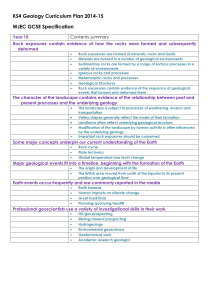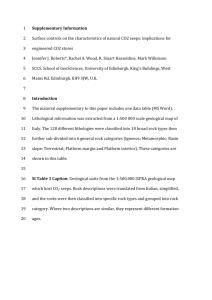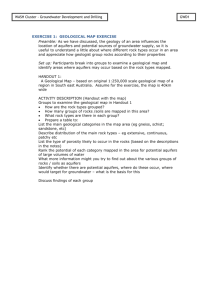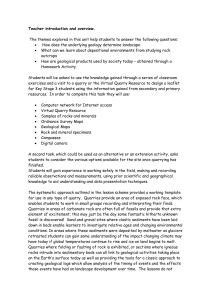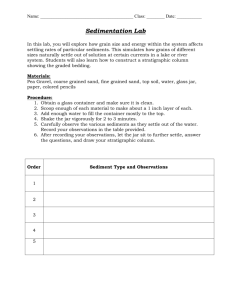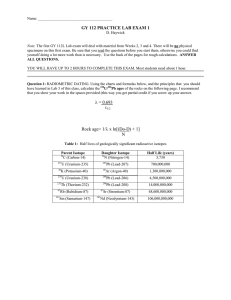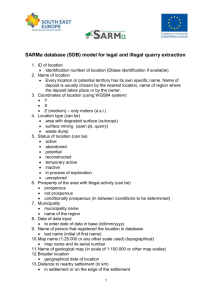Lesson One - Virtual Quarry
advertisement
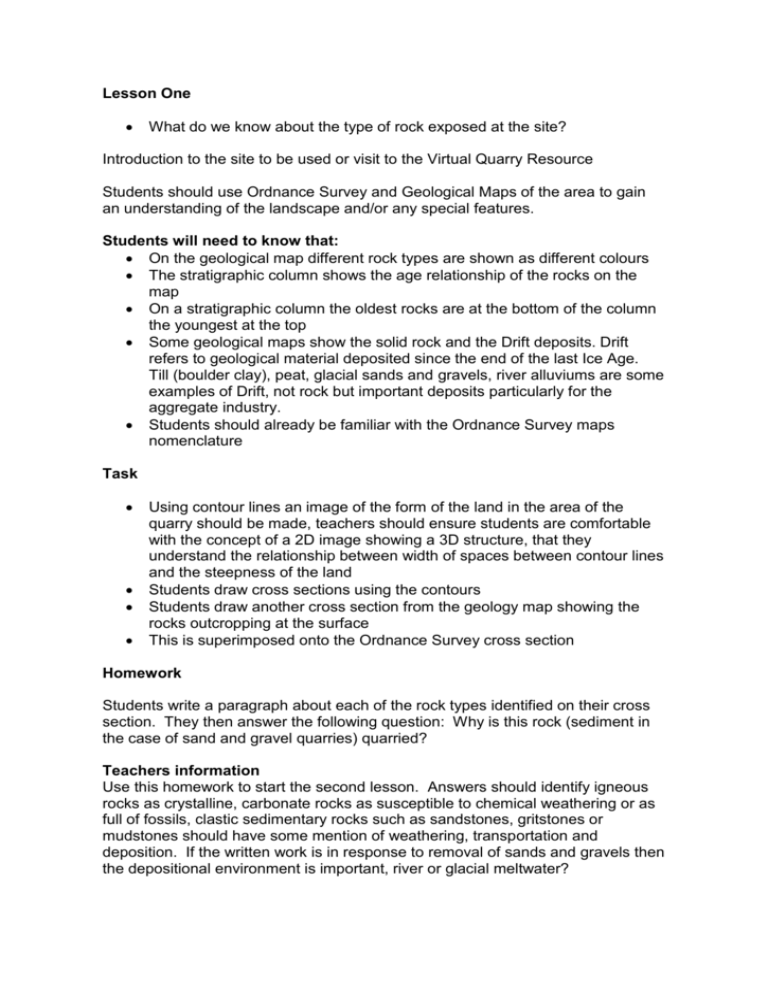
Lesson One What do we know about the type of rock exposed at the site? Introduction to the site to be used or visit to the Virtual Quarry Resource Students should use Ordnance Survey and Geological Maps of the area to gain an understanding of the landscape and/or any special features. Students will need to know that: On the geological map different rock types are shown as different colours The stratigraphic column shows the age relationship of the rocks on the map On a stratigraphic column the oldest rocks are at the bottom of the column the youngest at the top Some geological maps show the solid rock and the Drift deposits. Drift refers to geological material deposited since the end of the last Ice Age. Till (boulder clay), peat, glacial sands and gravels, river alluviums are some examples of Drift, not rock but important deposits particularly for the aggregate industry. Students should already be familiar with the Ordnance Survey maps nomenclature Task Using contour lines an image of the form of the land in the area of the quarry should be made, teachers should ensure students are comfortable with the concept of a 2D image showing a 3D structure, that they understand the relationship between width of spaces between contour lines and the steepness of the land Students draw cross sections using the contours Students draw another cross section from the geology map showing the rocks outcropping at the surface This is superimposed onto the Ordnance Survey cross section Homework Students write a paragraph about each of the rock types identified on their cross section. They then answer the following question: Why is this rock (sediment in the case of sand and gravel quarries) quarried? Teachers information Use this homework to start the second lesson. Answers should identify igneous rocks as crystalline, carbonate rocks as susceptible to chemical weathering or as full of fossils, clastic sedimentary rocks such as sandstones, gritstones or mudstones should have some mention of weathering, transportation and deposition. If the written work is in response to removal of sands and gravels then the depositional environment is important, river or glacial meltwater?
